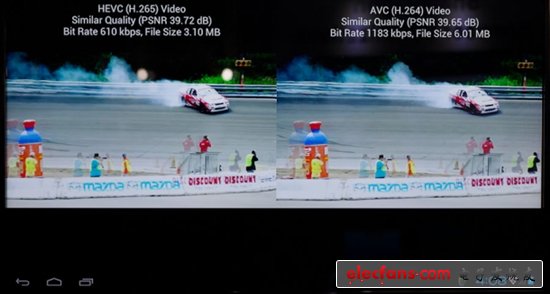The International Telecommunication Union (ITU) has approved the next-generation video standard, which allows 4K video to enter the future broadband network, and allows mobile networks with limited bandwidth to accept streaming HD video. The next-generation standard approved today is H.265, which is High Efficiency Video Coding (HEVC). The standard is designed to provide high-quality streaming video, even in low-bandwidth networks. H.265 is the successor to the H.264 standard. After the introduction of the iPad and other devices, H.264 was widely accepted by video publishers and became a popular standard. Now it seems natural, but that was not the case. At that time, Apple's acceptance of H.264 and HTML5 based video players caused controversy; before the iPad, most of the video was encoded by VP8 and played with Adobe Flash player. By improving compression technology, H.265 allows publishers to reduce the bandwidth requirements for streaming 1080p video by half. As a result, HD video can be provided not only in home broadband, but also in mobile and tablet devices, which have more restricted network bandwidth. In areas where the network connection is poor or most of the connections are mobile connections, the new standard can make online video more popular. In some places where the broadband connection speed is good, H.265 can also support higher quality video. 4K TVs have appeared, and companies have the opportunity to provide higher resolution video. The only problem is that the network cannot support video loading and cannot meet the requirements for streaming video. With H.265, as long as the broadband reaches 20-30Mbps, it can provide 4K streaming video. In spite of this, many of today's broadband still do not meet this standard. The adoption of the new standard does not mean that low-bit-rate streaming video will soon become popular, nor does it mean that video files will shrink quickly. Software encoders may appear by the end of this year, but they will not be popularized on a large scale until they are integrated into chips and hardware. It may take 12-18 months (or even longer) before the first device that supports H.265 hardware acceleration can enter the market. When the devices enter the market, they will see a lot of content, they will take advantage of H.265. Since the launch of the iPad, the proportion of H.264 video has increased from less than 10% to 84% within 3 years. In short, with H.265, video will be less restricted by bandwidth, and more high-definition HD video will appear on the Internet. Greeting cards with led lights Flashing Music Greeting Card, Music Valentine's Day Card, Greeting Card Flashing Led Module AST Industry Co.,LTD , https://www.astsoundchip.com